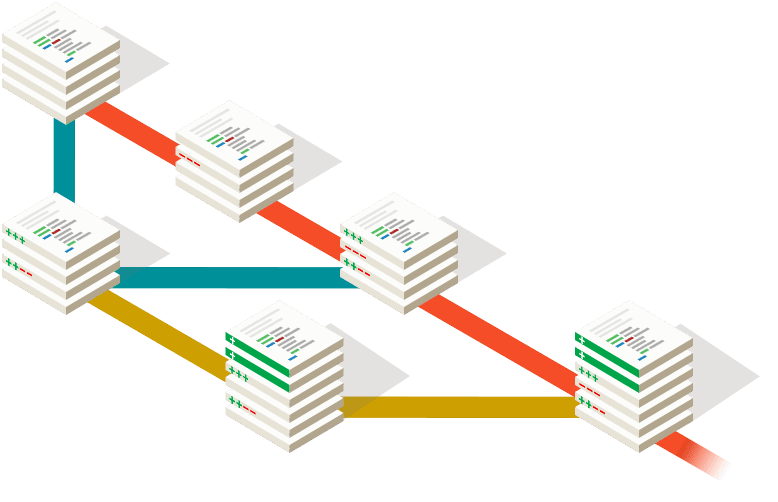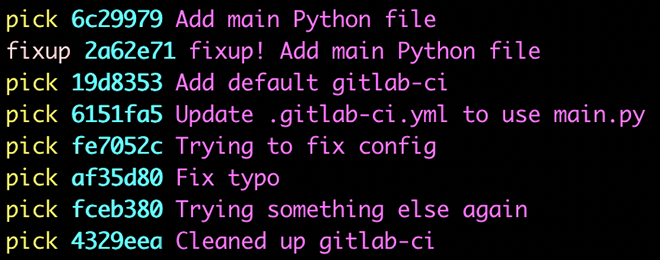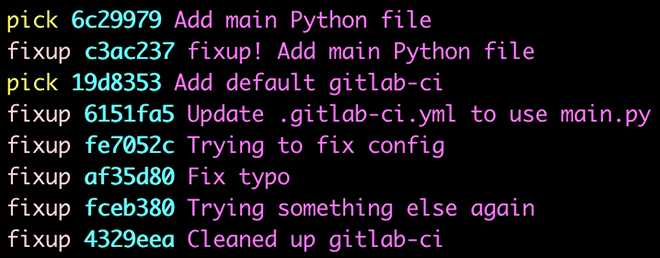Published on: February 7, 2019
4 min read
How to tidy up your merge requests with Git
Here's how to use a Git feature that saves a lot of time and cleans up your MRs.

I've worked on a lot of open source projects and one thing they all have in common is when you create a merge request (or pull request) they will often ask, "Can you clean up your request?" because commits like fix typo should not be included in a Git history.
Now there are a few ways of cleaning up commits and I'll show you what I have found to be the easiest way.
Below is an example scenario where I use a feature of Git that has saved me a lot of time. I have a tiny project seen in the image below.
 {: .shadow.medium.center}
{: .shadow.medium.center}
Now I like to run my main.py in a test environment to see if it works as expected.
I like to do that by configuring a .gitlab-ci.yml to run main.py.
Although this is extremely easy, for this example I made sure I increased the number of commits
to illustrate my example a bit more clearly. So after some time my commit history looks like this:
 {: .shadow.medium.center}
{: .shadow.medium.center}
Here you can see my first three commits add README.md, main.py and .gitlab-ci.yml.
A few commits update my gitlab-ci file, trying some stuff out, and fixing typos.
There's also a commit that cleans up my gitlab-ci and two more to fix and clean up main.py.
Now some of you might see this and think, "Looks good," while others might want to scream at me for making a mess out of my commits.
How do we fix it?
How to consolidate your commits
First, let's revert the last two commits using reset.
We don't want to lose our changes so we will use git reset --soft HEAD~2.
--soft will keep our changes of the files and HEAD~2 tells Git the two commits from HEAD position should be reverted.
We create a new commit, git commit --fixup 6c29979. This will create a commit called fixup! Add main Python file.
When we run git rebase -i --autosquash 24d214a we can see below that our fixup commit has been moved below
the commit we referenced with the tag 6c29979. I could save this and the fixup will be merged into the commit above.
 {: .shadow.medium.center}
{: .shadow.medium.center}
But if we look at the commits below the fixup, we see that all the commits are related to the .gitlab-ci.yml
and by making a small change here, we can clean up my commits in a single go. We will change the pick to fixup for all
commits but Add default gitlab-ci (shown in the image below) and we will save this.
 {: .shadow.medium.center}
{: .shadow.medium.center}
Checking our Git log, we see that our long list of commits has been reduced to just three. There is a big change that
you should be aware of: because I have just rewritten my Git history I will have to use git push --force to update
any remote repository.
 {: .shadow.medium.center}
{: .shadow.medium.center}
This looks a lot better now; only the relevant commits are left. But could we have prevented this while working on this feature? The answer is yes.
We could have used git commit --amend to add almost every commit behind 19d8353 Add default gitlab-ci.
This wouldn't require any new commit for any changes that we were making to our .gitlab-ci.yml file. We would have ended
up with the following and we already know how to handle the fixup.
 {: .shadow.medium.center}
{: .shadow.medium.center}
Something to keep in mind when using features that rewrite the history of your Git repository: If you already
pushed your previous commits to a remote repository you will have to use git push --force to overwrite the
history of the remote repository. Bad use of this could cause serious problems, so be careful!
If you run into trouble, a useful guide that could help you recover from this is [git push --force and how to deal with it](https://evilmartians.com/chronicles/git-push
We want to hear from you
Enjoyed reading this blog post or have questions or feedback? Share your thoughts by creating a new topic in the GitLab community forum.
Share your feedback